Please check our FAQs section if you unsure how to use the website or looking for something specific
Flanagan identified the role of light as a separate, but totally sculptural element and considered it a key component in sculpture.
For several years natural, manmade and artificial light were central elements in his work.
The first notable occasion was for the exhibition 19:45-21:55 September 9th 1967 at Galerie Dorothea Loehr in Frankfurt. Flanagan wrote a list of actions that participants were to follow that begun with “turn all lights off for 10 secs, on for 10 secs, off for 10 secs etc”.
This processes of orientation and disorientation, light and darkness, and the recognition and subversion of identifiable systems are established strategies of aesthetic encounter, and this interplay of reversals and repetitions are intrinsic to Flanagan’s practice.
One year later Flanagan began to directly investigate the medium in a 25 minute film titled ‘light, shape, short’ (1968) exhibiting it in Barry Flanagan: Object Sculptures at Museum Haus Lange, Krefeld.
This was Flanagan’s first exhibition in a public institution and the first time he showed sculpture that was made using projected light as a sculptural component.
“My difficulty now with the new interest is to think about and work with light, as a reality and actual phenomenon rather than an ‘idea about it’ or concept. My most basic assumption has been that light is to be taken for granted.”Barry Flanagan in discussion with Gene Baro, 1969
While in Krefeld Flanagan planned site-specific works for an exhibition at Fischbach Gallery in New York, an exhibition he was to fly directly to from Germany.
For this he made ‘daylight light piece 2 ’69’ (1969), a second and reconfigured version of a line of light projected into the corner of a room and ‘daylight light piece 5 ’69’ (1969), which consisted of a rectangular box of light echoing the shape of a painting, projected onto a slightly larger sheet of brown paper stuck to the wall.
Flanagan went on to merge his new explorations with light and his interests with hessian sacking and rope with ‘light on light on sacks’ (1969), and ‘Hayward I’ (1969) later that year in the group show 6 at the Hayward Gallery, curated by Michael Compton.
Compton anticipated that Flanagan’s work for the show would ‘be paradoxically very cheap and yet unsaleable, a parable therefore of an ideal art.’
From then on, and throughout the 1970s, he made many works with light.
For an exhibition at Art and Project in December 1977, Flanagan, with the assistance of engineer Jonathan Park, constructed his own projectors for several light sculptures. The show included ‘light piece I’ (1977), a projection of light in the shape of a lightbulb filament.
Flanagan’s interest in the three-dimensional properties of materials, the sensual and the tactile, surface, colour, weight and balance and light are brought together in his ‘Shadow catcher’ works.
At once serious and humorous, clear and contradictory, the sculptures display in practical terms, how they are impossible to realise, an imaginary solution perhaps born from his interest in ‘pataphysics.
Installation view ‘shadow catchers 1 ’77/79’ (1977) in Barry Flanagan: Early works 1965-1982 at Tate Britain, 2011
“…I liked the piece at the Hayward, where he projected a light over some sandbags in a corner of a room. I thought that was a good piece…Just simple things like that that were possibilities of what sculpture could be, he opened it all up.”Bruce McLean in conversation with Prof. Jo Melvin for the film ‘Imaginary Solutions’, 2022
After many years of his light works not being shown, an exhibition at &Model in Leeds in 2017, curated by Dr Jo Melvin, Director of the Barry Flanagan Estate, bought together a number of Flanagan’s ‘light pieces’.
The exhibition showed how Flanagan’s dynamic role in the instigation of sculptural approaches to conceptual art practice continues to resonate with contemporary concerns in art practice years later.
Installation views of ‘daylight light piece 1 ’69’ (1969) in Barry Flanagan Light pieces and other works at &Model, Leeds, 2014
Installation views of ‘daylight light piece 2 ’69’, 1969 in Barry Flanagan Light pieces and other works at &Model, Leeds, 2014